
Setting up a Dual-Monitor Projection System
Part II - Projector Wiring Setups
If your church has decided to install a digital projection system, and you'd like to save a considerable amount of money by doing the installation yourself, you might be wondering how to set up the system. There are many possible ways to wire a system, and each has some benefits and some problems.This page is a primer on a number of possible setups, with illustrations and a brief discussion of the merits of each.
The "complete" option may look complicated, but you can purchase ALL the equipment shown here, including the PC, a very good projector (XGA resolution, 2500+ lumen), the cables, monitors, and conversion boxes, for well under $10,000. And the wiring is not very complicated. You don't need to pay a contractor $35,000 to do the work for you. And if you decide you'd rather that it be installed professionally, this at least should help you evaluate their proposal more intelligently.
Let's start with a very simple system.
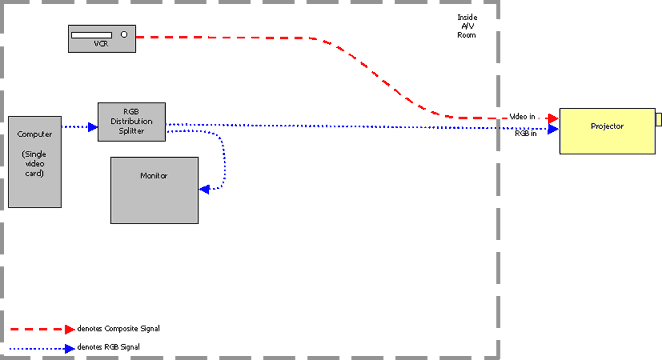
This system is the most basic possible projector setup. The PC has one video card, there's one monitor, one projector, and a VCR (all these examples will include a VCR). The projector handles all the source switching.
Benefits:
Problems:
Let's add a video card to this simple system.
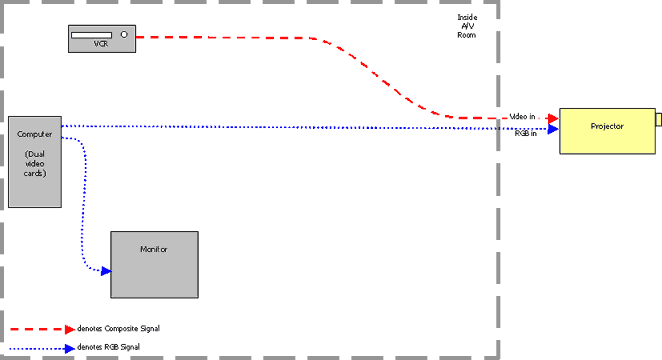
This system is a bit more flexible than before, while fixing a significant problem - the lack of off-screen control.
Benefits:
Problems:
So far, both systems are rather inflexible. You can't add extra video sources, and they require switching everything with the projector. And still, there's that problem with not being able to see what's happening on the projection screen before the congregation does. So let's add a second monitor in the A/V room.
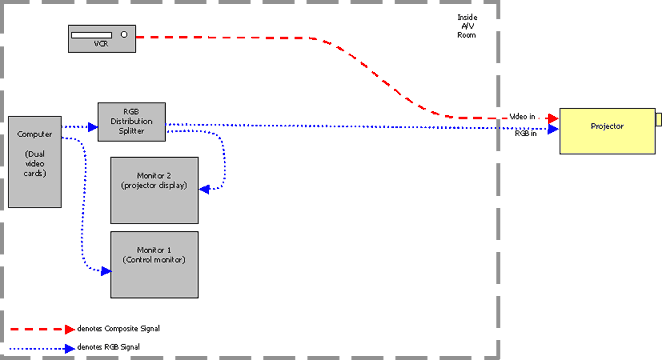
This system is getting to be useful, but still has some issues.
Benefits:
Problems:
Things are getting better, but there are some improvements we can make. Let's get the "loop back" from the projector, and use THAT to drive the second monitor.
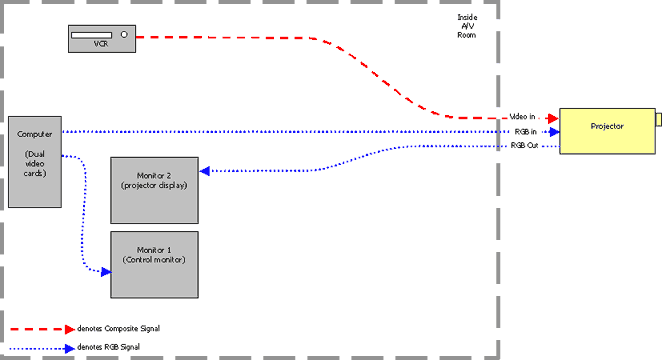
Now, we can see what the projector is showing from the A/V room - this is not significantly different than before, but it's a building block for the next steps.
There's still the issue of no input source flexibility. Let's run an additional RGB cable to the projector, in case we want to be able to add a notebook computer (for those unusual events when someone brings their own Powerpoint slide show).
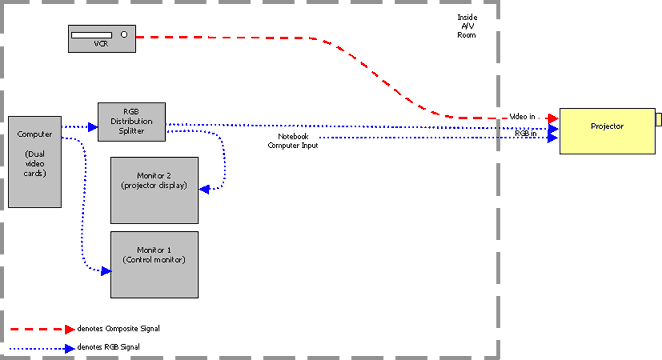
Benefits:
Problems:
Let's expand the capabilities a bit. Many churches want to display the projection screen somewhere else - such as an alcove with a broken view of the main screen, or perhaps the nursery or lobby. Let's capture that RGB loopback and use it to drive a couple television monitors.
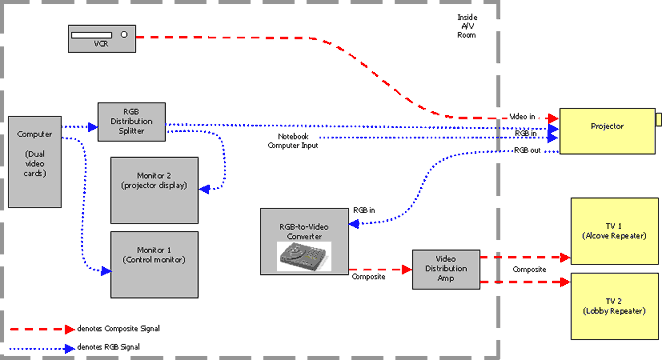
Benefits:
Problems:
There's one big step we can take to make a very flexible, but easily controllable system. We'll add a video source switch in the A/V room.
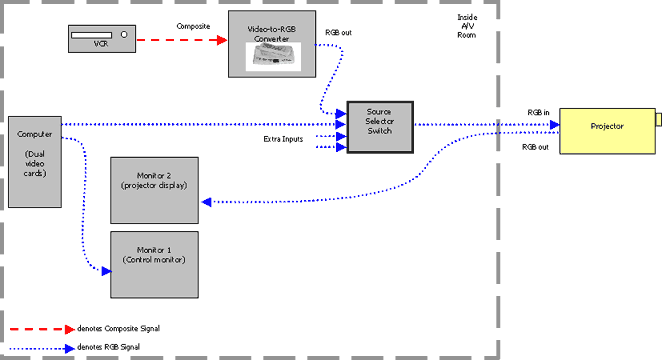
The switch box is a computer RGB (monitor) switch, available for under $50. To make it simple, we'll first convert the video signal to an RGB (computer-style) video source. Now we have a single switch for all sources, in the A/V room, and plenty of extra inputs.
Benefits:
Problems:
Let's wrap up all the concepts above into one very complete, very flexible system.
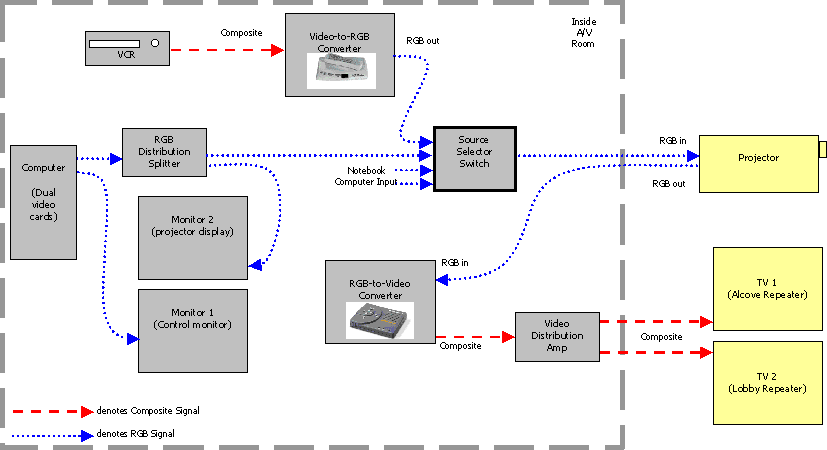
This system has got it all, with few operational problems.
Benefits:
Problems:
To wrap it all up, the ideal design for your church lies somewhere on this page, perhaps in between some of these options. Hopefully these will get you thinking about the best way to design your system.
Other Info
Why Dual Monitors?
Checklist
Additional Info
Some other pages on setting up for dual monitorsMicrosoft MSDN
Matrox
Using Powerpoint in Church
Using Powerpoint in Church (2)
CyberWalker
EliteGuild
Tulsa Computer Society